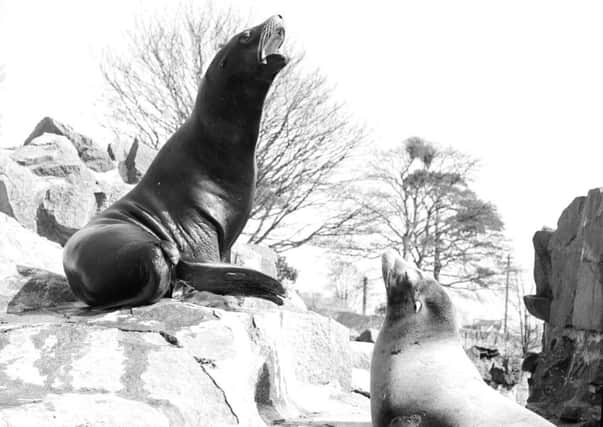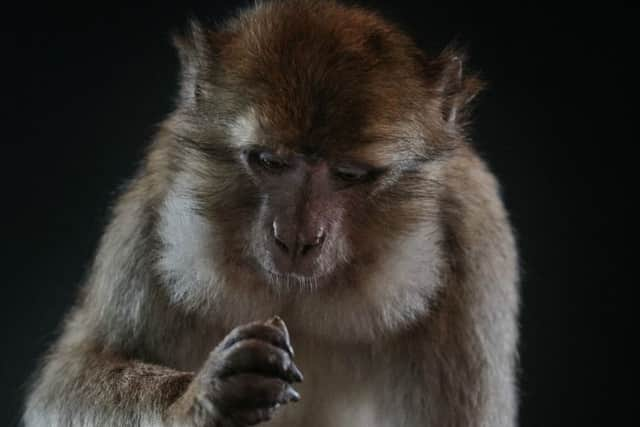5 great escapes from Edinburgh Zoo


Escapes may be incredibly rare from the Corstorphine landmark but the sight of such animals on the streets of Edinburgh has caused both surprise and delight over time.
Here we look at 5 occasions when Edinburgh’s streets really went wild.
Sea lions - May 1924


Advertisement
Hide AdAdvertisement
Hide AdTwo Californian sea lions went on the run for 11 hours after breaking out of their enclosure after dark and were found more than a mile and a half-away basking in the Water of Leith.
The alarm was raised in the morning by a zookeeper who had last seen the animals around 9pm the previous night.
Mr TH Gillespie, the director of the Zoological Gardens, “could not conceive how they got to Roseburn Bridge, which is over a mile and a half away, in 11 hours,” a report in The Scotsman said.


“A large net was employed and one of the animals was enticed out the water with fish for bait,” it added.
The adventure was over when the sea lions were put back in their wire cages and taken back to Corstorphine.
Pelican - April 1930
The bird apparently “took advantage of a high wind” to free itself from the zoo and was later spotted at Barnton Station.
Two zookeepers, one equipped with a large net, later discovered the pelican resting on the nearby golf course.
Advertisement
Hide AdAdvertisement
Hide Ad“The wind was gusty and the bird rose to evade his captors. Eventually, however, he was chased into a wood and being unable to rise about the tangled tree branches, was captured,” The Scotsman said.
Three vultures - October 1936
The three birds disappeared when their aviary was blown down in a fierce storm and were discovered around seven weeks later in a hen coop on a small holding near Bo’Ness.
The public had been urged to look out for the birds - “about the size of small turkeys” - after they went missing.
It later emerged that two of the birds had made their home in Kinneil Woods to the west of Bo’Ness and were regular visitors to the smallholing of firewood merchant Alex Muir.
“Each day they swiped down on the steading....and mixed freely with the hens, chickens, pigs and a family of cats,” a report said.
Mr Muir and his wife laid meat in the hen coop to attract the vultures, with a trapdoor - made specially for the task - pulled down by ropes to hold the birds.
A zoo official came to collect the vultures and took them back to Corstorphine in a cage in the back of his car.
Rhesus Macaque - August 1933
Advertisement
Hide AdAdvertisement
Hide AdNot even doped bananas could trap this wandering Rhesus monkey who was at large in Edinburgh for more than three weeks.
Normally found in Afghanistan, Pakistan and Indian, this Rhesus Macaque was later discovered dashing between the rooftops of Murrayfield.
It originally escaped from a circus at Dalkeith and was returned to the zoo, from where it quickly escaped again.
“It disappeared as soon as the basket was open and was next heard of amongst the roof tops of houses in Murrayfield. Food was laid out, but the monkey and the food vanished. Even doped bananas were of no avail,” a report of the day said.
The Rhesus was found in a house in Spring Gardens, Abbeyhill, around three miles from the zoo.
It had entered through a skylight to shelter from a heavy shower of rain.
Zookeepers took no chances in transporting the monkey back to base. They ditched the usual wire basket - and transported him home in a sack.
AND...
Yousef the Barbary Macaque - 2009
Advertisement
Hide AdAdvertisement
Hide AdYousef the Barbary macaque was shot with tranquilliser darts on a hotel roof after making a bid for freedom following an argument with an older monkey in November 2009.
The four-year-old monkey broke out from his cage and scaled an electric fence before weaving through traffic and swinging from trees and lampposts.
He was tracked down to the roof of the Capital Hotel in Clermiston and was carried away after being anaesthetised by a zookeeper. It was the second time he had escaped that year.
Yousef died in 2010 and was later stuffed and displayed at the Monkey Business Monkey exhibition at the National Museum of Scotland in 2012.
Dr Andrew Kitchener, principal curator, said at the time: “We’ve mounted him stuffing his cheek pouches with acorns which were sent to us from Morocco – so they are genuine Barbary macaque diet.
“In his life he never tasted his natural diet, so we are showing him a bit in the museum.”
